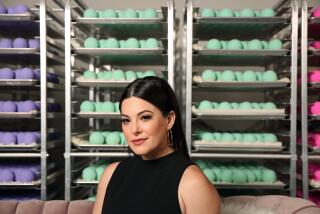Court Clears Way for Dalkon Shield Payouts
- Share via
WASHINGTON — The Supreme Court cleared the way Monday for nearly 100,000 women who were injured by the Dalkon Shield birth-control device in the early 1970s to begin receiving compensation for their injuries.
By ending further appeals, the high court brought to an end one of the nation’s largest and longest-running product liability cases. The new owners of A. H. Robins Co., makers of the intrauterine device, earlier agreed to create a $2.4-billion fund to settle the outstanding damage claims.
The justices declined to hear an appeal filed on behalf of 600 women who contended that the $2.4 billion was inadequate. Attorneys representing another 18,000 women filed a separate brief urging the court to end the case and let the settlement begin.
Lawyers for the women said Monday it will be at least several months before their clients receive any money, but they foresaw no major legal problems ahead. Distribution of the funds will be administered in bankruptcy court with payments based on the severity of the injury.
Introduced in 1971 when women were coming to fear the side effects of birth control pills, the Dalkon Shield was marketed as safe, effective and pain-free. The nickel-sized plastic shield was inserted into the uterus and acted to block the implantation of a fertilized egg. A company brochure claimed its new device was “generally well tolerated by even the most sensitive women.”
Within a few years, an estimated 2.2 million American women had used the Dalkon Shield, as had another 1 million outside the United States. Thousands of them began complaining of severe pelvic infections. Hundreds had spontaneous abortions, and at least 18 died from various complications.
Medical researchers concluded that the tiny string attached to the shield acted as a conduit to spread bacteria from the vagina into the uterus. Without acknowledging that the Dalkon Shield was causing these medical problems, the Richmond, Va.-based A. H. Robins nevertheless quit marketing the device in 1974.
Thousands of lawsuits were filed against Robins, and for years the company chose either to fight them or to settle quietly out of court. By 1985, however, the weight of litigation and the outstanding claims grew too great, and the company directors sought protection under the bankruptcy laws.
The way was paved for the final settlement when American Home Products Corp. agreed to buy out Robins and set up the $2.4-billion fund to settle all the outstanding claims.
Lawyers for women who had used the Dalkon Shield initially counted as many as 330,000 claims against the company. But more than 135,000 claims were dismissed by the court-appointed overseer of the bankruptcy action, and another 80,000 women were given minimal $725 payouts to resolve their claims. Left to be resolved are about 95,000 claims.
Washington attorney Alan Morrison, acting on behalf of about 600 women, urged the justices to intervene and rule that former Robins executives could be liable in the case. He contended that the settlement approved by the bankruptcy court was a better deal for the Robins shareholders than for the women injured by the company’s product.
“The Robins shareholders will receive $700 million in stock of American Home Products, while approximately 195,000 Dalkon Shield victims will be relegated to seeking recovery for injuries from a trust fund, which, although quite substantial, may be inadequate to satisfy in full all of the Dalkon Shield claims.”
Moreover, Morrison complained, the settlement gives a legal immunity to former Robins executives who, he argued, should be forced to pay for unresolved claims.
However, in an unusual friend-of-the-court brief, several lawyers representing 18,000 women called Morrison’s group a “small group of disenchanted claimants” who do not speak for the vast majority of victims. They said they feared American Home Products Corp. could withdraw its $2.4-billion offer, leaving the women with no settlement fund.
“The majority of Dalkon Shield claimants oppose (Morrison’s appeal) and recognize a substantial risk if the (appeal) petition is granted,” they said. “Not only will they suffer further delay and a further loss of interest on the trust fund, but in all likelihood, they will lose the plan and the trust fund altogether.”
With Justice Bryon R. White dissenting, the court dismissed Morrison’s appeal without comment. (Menard-Sanford vs. A. H. Robins, 89-441.)
BACKGROUND
The Dalkon Shield was marketed by the A. H. Robins Co. in the early 1970s as a safe, effective birth control device. Instead, for thousands of women, the intrauterine device caused infections, spontaneous abortions and even death. The shield was withdrawn from the market in 1974. Robins went bankrupt in 1985, but a $2.4-billion fund was created to pay the nearly 100,000 women who still have damage claims pending.
More to Read
Sign up for Essential California
The most important California stories and recommendations in your inbox every morning.
You may occasionally receive promotional content from the Los Angeles Times.














